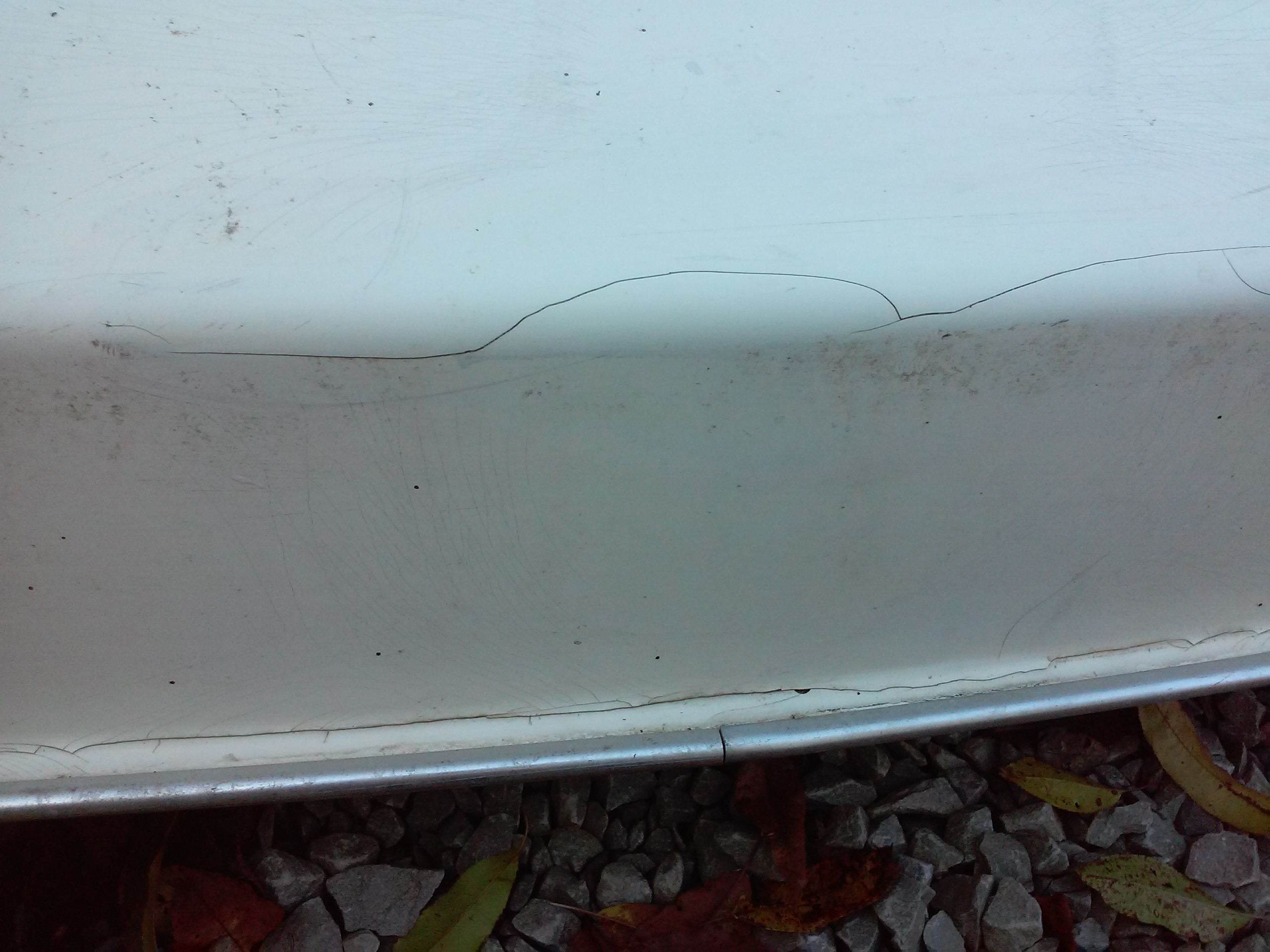There is a crack about 12 inches (30cm) long on the edge of my Sunfish sailboat. I am not sure if the crack is all the way through the fiberglass, or just the gel coat. It is on the corner between the side of and the bottom of the boat. When I push on it I can hear a little noise that could be glass fibers moving around. I suspect the fiberglass is at least partially compromised.
Googling around I find people who are using lots of products on fiberglass with super glue and gorilla glue, often considered but maybe not the best choice.
Pending a proper fiberglass patch with a new gel coat application, is there anything I can use to fill and join the crack, that will work well and not create a problem later?
I am looking for a solution between ducktape and a full fiberglass patch as described in these two questions How to fix a leak in a fibreglass kayak? & I put a big gouge in the bow of my canoe going across rocks. How can I fix it?
Image of Sunfish, upside down showing crack
